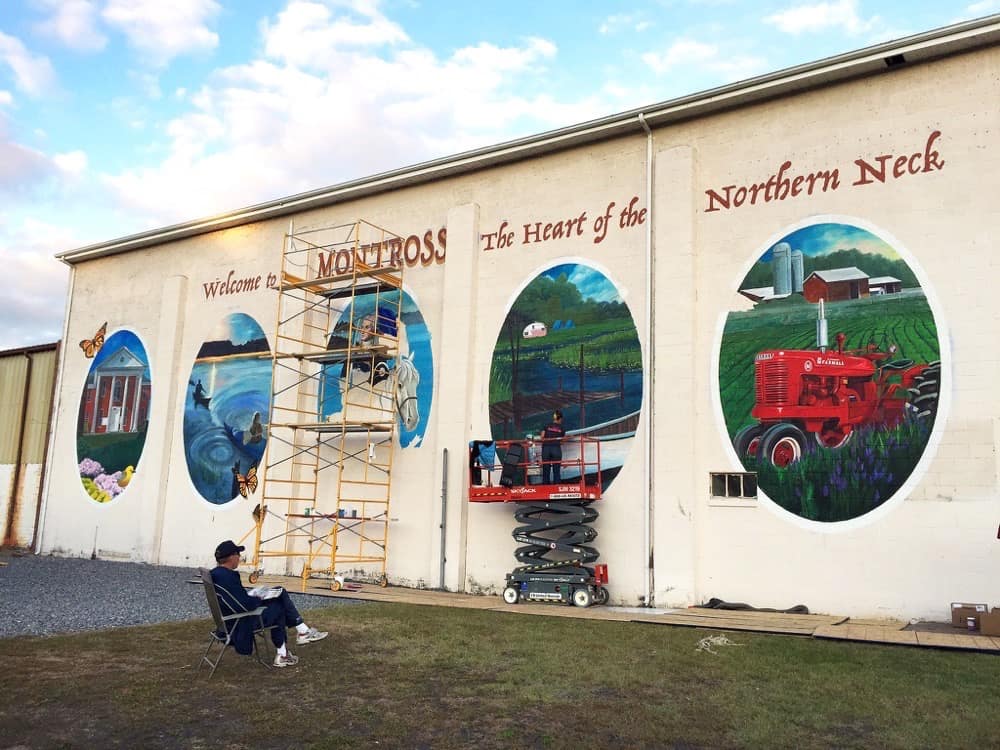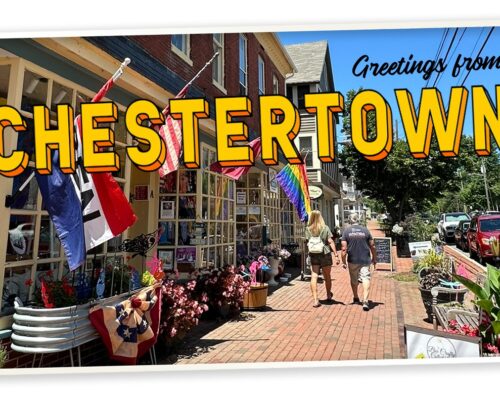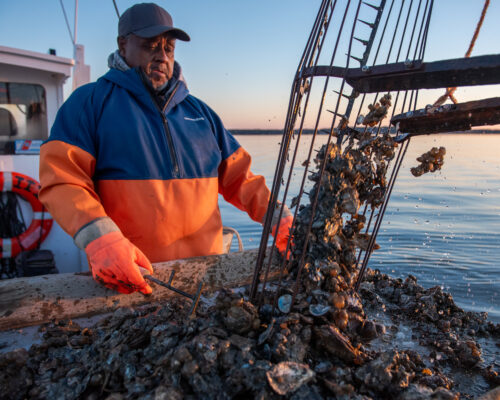Summer is the season for trails. You can boat in the wake of John Smith on his Chesapeake National Historic Trail or sip and slurp your way across Virginia on the Wine and Oyster Trail. But if you what you crave is food for the soul, look to the Northern Neck Artisan Trail, where “water surrounds, and creativity abounds.”
If you’ve never heard of the Northern Neck, you’re not alone. We sailed along its shores for years without even knowing this rural Virginia peninsula had a name. Cross the Potomac and head east, and you will find winding country roads, small towns, and a slower pace of life. But amidst all this quiet, unspoiled beauty, you will also find something unexpected—a vibrant arts community, and an opportunity to experience the artists’ gifts in an unusual and intimate way. The Northern Neck Artisan Trail is a roadmap to more than two dozen personal studios and homes where,
as painter Brenda Sylvia puts it, “You can see the artist in her natural habitat.” Here is just a taste of what you can find.
Immerse Yourself in Murals
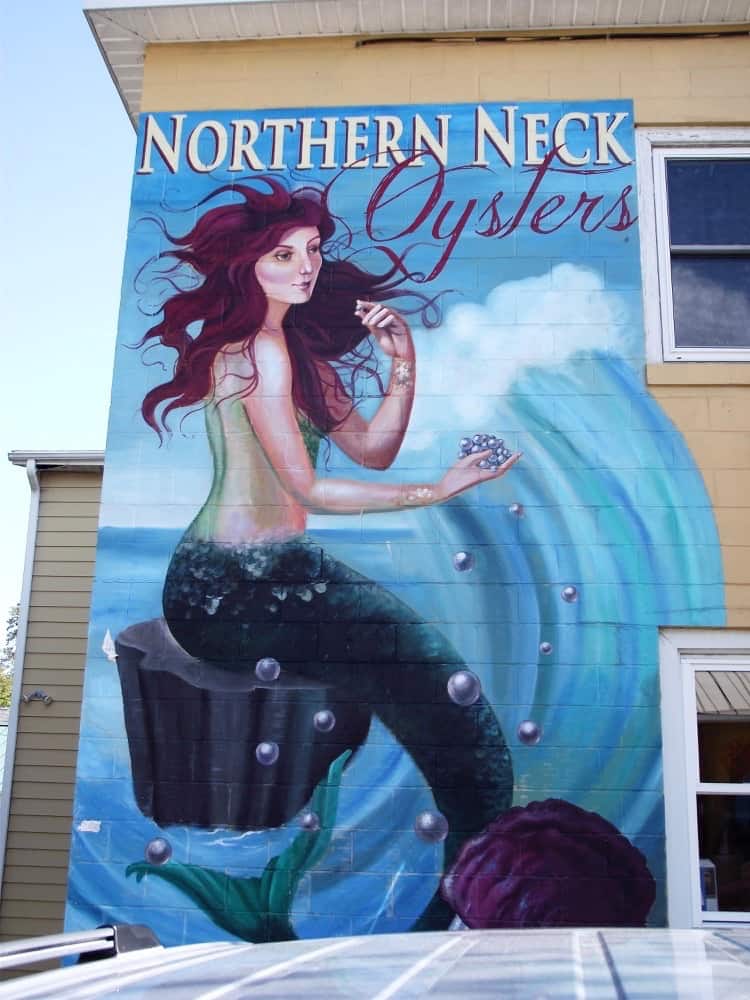
Our first stop, the little town of Montross, doesn’t just have art—it is art. The main thoroughfare is a gallery of larger-than-life murals, the work of Melanie Stimmel Van Latum of We Talk Chalk. She is the winner of numerous European competitions and the only woman to hold the title maestra modonnarra (master street painter) in both Italy and Germany, making her one of the world’s most decorated street painters.
“Street art is unique, in that every surface is a potential canvas,” Van Latum explains. And because working outdoors draws spectators, she says, it becomes “an interactive experience.”
Given her international roots, finding Van Latum in the Northern Neck is something of a surprise. She is the first to admit Montross was not on her radar. Based in We Talk Chalk’s Las Vegas gallery, she was displaying at a festival in Northern Virginia when a someone on the town’s revitalization committee saw her work. She encouraged her to bid on the Montross revitalization project. Van Latum won the commission—and fell in love with the area.
“For anybody from a city, it really is an escape, just a completely different vibe from what you’re
used to.”
She divides her time between Las Vegas and her Montross Mural Studio, where she offers workshops and paints customized murals for East Coast clients. Van Latum’s classes
are online due to the pandemic, but she plans to use her Montross studio for more immersive, retreat-style courses in what she calls a “transformative art.”
“Every story can be expressed visually, and murals can transform a space while telling that story.”
A walk through Montross is proof that she is right.
Watch a Master Woodworker
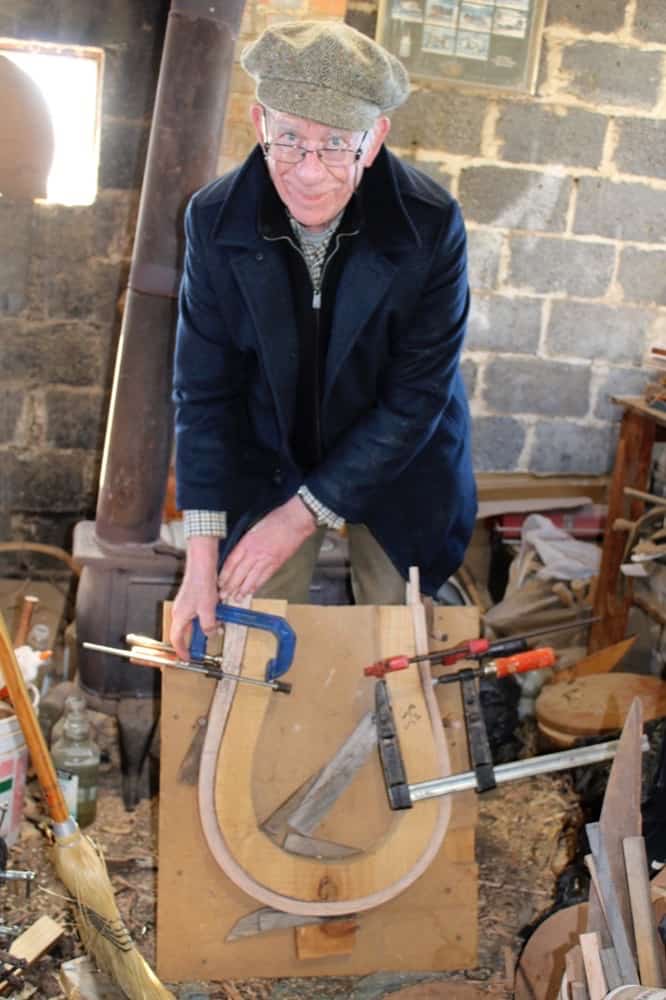
quickly bent to form a Windsor chair’s graceful curves.
A mile from downtown Montross, Bill Jenkins adjusts a caliper, one in hundreds of painstaking steps to turn shapeless blocks of wood into historically accurate colonial era furniture. We are in the old smokehouse-turned-lathe shop on Locust Farm, his family’s ancestral home. It is one of many outbuildings crowded with tools, wood, and works in progress, and with our tour we receive an education in the art of making Windsor chairs.
“I let the wood air dry so it keeps its color,” he explains, gesturing to stacks of untouched maple, oak, and cherry. When asked how long that takes, he smiles. “A year per inch.”
While drying is slow, Jenkins notes that other steps require speed. After steaming a piece of wood, he has about 90 seconds to shape it—any longer, and it grows too hard to bend. Each chair takes between a week and 10 days to produce, and he produces more than a dozen designs, including armchairs, rocking chairs, and settees. While his pieces can be customized, stained and painted to order, Trail visitors can also purchase furniture from his “showroom”—the farmhouse he shares with wife Lucylin. Jenkins credits her with his second career as
a woodworker.
“When I retired, she asked me to make her some comfortable dining room chairs,” the former commercial pilot says with a laugh.
He decided on Windsors and headed to New Hampshire and later Ohio, where he learned his craft from master woodworkers Michael Dunbar and Ernie Conover. Jenkins began selling his Locust Farm Windsors in 2003, and the quality of his work soon led to a request to produce Windsor chairs for the entire Continental Congress in the Tom Hanks-produced miniseries John Adams.
As much as he loved flying, he says there is something eminently fulfilling about his second career.
“As a pilot, at the end of the day someone might say, ‘Nice flight.’
With woodworking, I am creating something that will last for generations.”
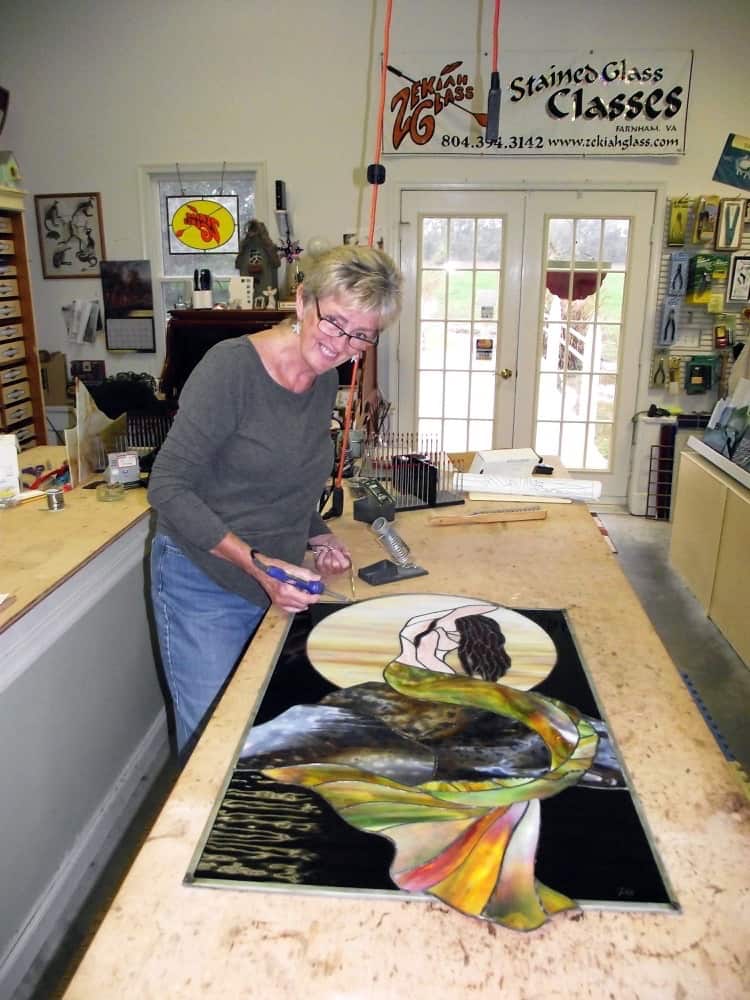
Dream Through Glass
Turning visions into lasting works of art is what motivates Barney Harris of Zekiah Glass. Her studio is tucked away on Morattico Creek, where inspiration can be found outside of every window. But while her own stained-glass pieces can be seen in galleries throughout the Northern Neck, it is the work of her students that she says gives her a reason to get up in the morning.
“I love teaching. Lots of artists like doing their own thing, but I need the social interaction. It is just so rewarding when you help someone realize the image they have in their head.”
Zekiah Glass offers a unique Artisan Trail experience: a two-night stay at Chestnut Cove, her home that doubles as a B&B, and a two-day, hands-on stained-glass course that the Washington Post has highlighted as one of their “great escapes.” Best of all, everyone leaves with their very own work of art. “That’s the number one rule,” she laughs. “You can’t leave until you’re finished.”
She is quick to point out that hers is not a craft class. There are no premade patterns to follow, no precut pieces of glass. Students can send a picture of what they have in mind, come in with an idea, or start with a completely blank slate. “We bat ideas around, and things spark. I draw what they describe, and I always say don’t worry, I have an eraser. Art is an evolving thing—you can mold it as you go.”
Her class draws everyone from couples celebrating anniversaries to friends or families looking for a vacation with a takeaway. “I get guests who don’t want to just sit on a beach and do nothing. They want to relax and accomplish something.”
On the day we visit, students Janet Eddy and Deborah Barr are in the early stages of their pieces. The two friends were looking for a stained-glass class they could take together and happened upon Zekiah Glass on the internet.
“This is so much more fun than going to an eight-week class,” Barr stresses. “Plus, here we get to really know the artist.”
Experience Color on Canvas
That connection between art and the artist is what drew painter Brenda Sylvia to the Artisan Trail. She believes that artwork takes on a deeper meaning when the buyer knows the piece’s backstory. “The Artisan Trail lets people relate to artists, to see how we live and to build a relationship with the individuals they are supporting.”
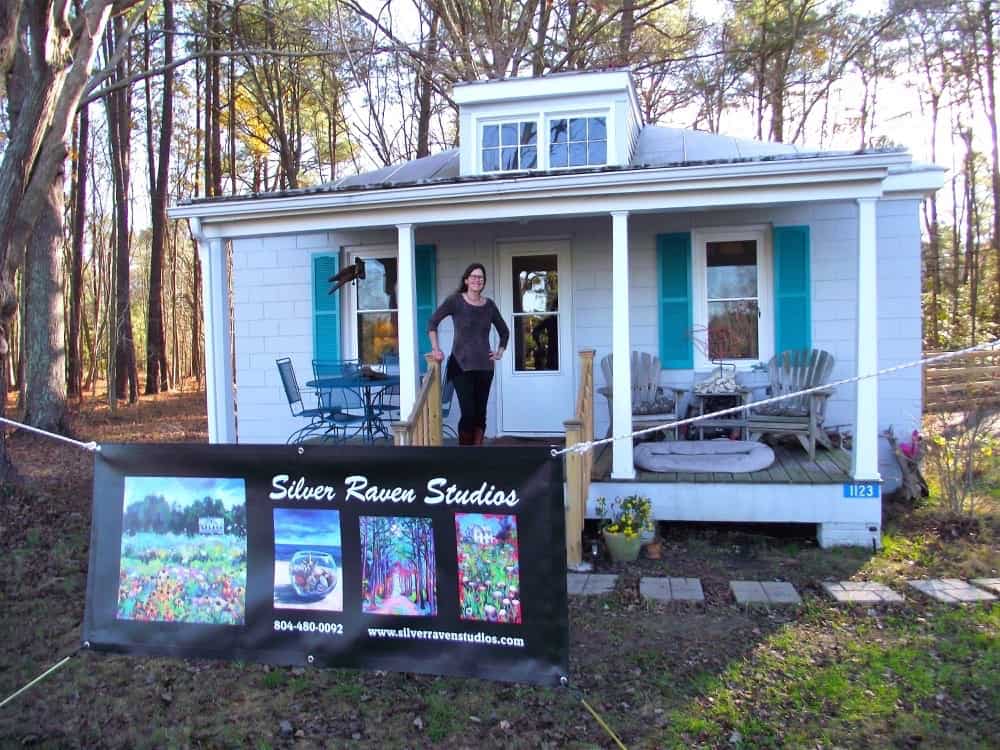
Sylvia lives and paints out of Silver Raven Studios, a quaint fishing cottage in Reedville. Something of an adventurer, Sylvia spent much of her career in the Virgin Islands, and her pieces are still on display at the Mango Tango Art Gallery in St. Thomas. The influence of her Caribbean experience is showcased by Sylvia’s vibrant use of color and her choice of subjects: flowers, water, trees, and fields. “The beauty of nature is the most important feature in my artwork,” she says, gesturing to the canvas on her easel, a riotous display of forsythia and daffodils.
Sylvia’s work can be seen in local galleries and in exhibitions (her “Beauty by the Bay” collection will be on display at the Reedville Fisherman’s Museum beginning May 1), but seeing her pieces in her personal space creates an intimate experience for both Trail-goers and artist alike.
Find Creative Sanctuary
The A-Ibañez Museum in Kilmarnock is unique among the artisan studios on the Trail. It offers not only the opportunity to meet an artist, but an invitation to be part of a broader arts community. The brainchild of writer Denise Aileen DeVries and her artist husband, Alvaro Ibañez, the 40-acre property includes three galleries, space for outdoor gatherings, and a retreat house, all set against peaceful wooded wetlands and a short walk from the Hughlett Point Natural Area Preserve. Visitors can stay for an hour and tour the galleries or stay for a week and refuel their own creativity. “We wanted a place where people would feel they could get away and get inspired,” DeVries explains.
And inspiration is everywhere. Ibañez walks guests through his galleries, where “every painting has a story,” and he delights in sharing his experiences as a Colombian immigrant and an artist. His work is bold and evocative, drawing on a range of influences from the vistas of the Arizona desert to Finnish mythology. On any warm afternoon you might find DeVries, author of the novel Sweet Tea and Vinegar Pie, listening as local writers share poems on the wide outdoor deck. The couple regularly host open houses and creative launches, showcasing writers, dancers, filmmakers, artists, and musicians. It’s all part of what DeVries says is their ultimate goal: “We came here to build a creative community, to mentor young artists, and to share what we have.”
Ready to travel the Trail? Visit the Northern Neck Chamber of Commerce at northernneck.org/northern-neck-artisan-trail.

